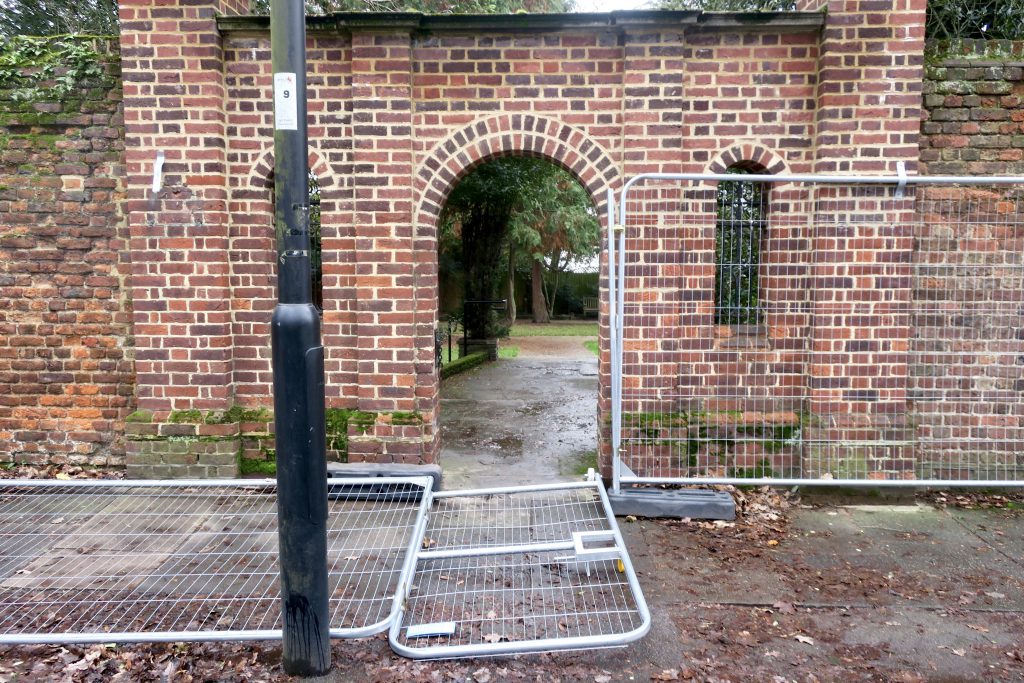
I’ve still not been getting out much but on New Year’s Day I managed to get 5 miles from home to visit the Minchenden Oak. I didn’t get such a great welcome, but thankfully I was not denied access. It looked like it was meant to be closed, but its makeshift gate was on the ground when I arrived. This is the only entrance to the Minchenden Oak Garden, a small walled garden created in 1934 to safeguard the ancient Minchenden Oak.
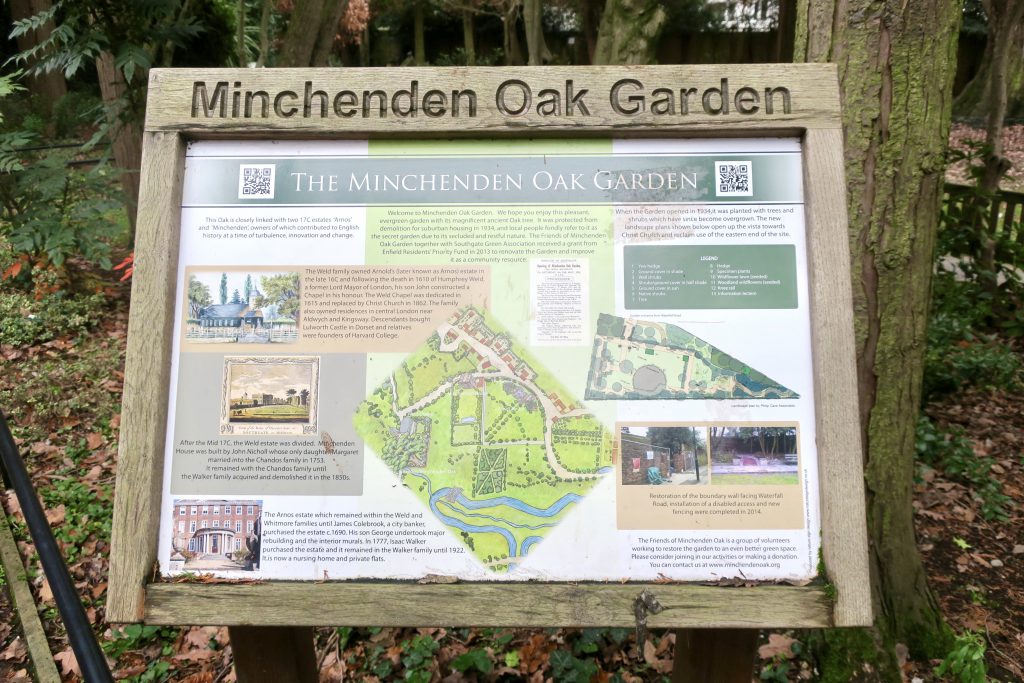
I first heard of it just before Christmas from The British Oak by Archie Miles:
The development and expansion of London over the last two hundred years has seen the disappearance of almost all of the open countryside and farmland, which has been overwhelmed by the ever-increasing and all-consuming urban sprawl. Here and there the occasional common, river or canal bank, or woodland marks a tiny retreat that has somehow survived the march of twentieth-century change. In Southgate, in north London, adjacent to Christ Church, a small public park called Minchenden Oak Garden, that was set aside in 1934 as a garden of remembrance, contains what is probably one of, if not the oldest tree in London.
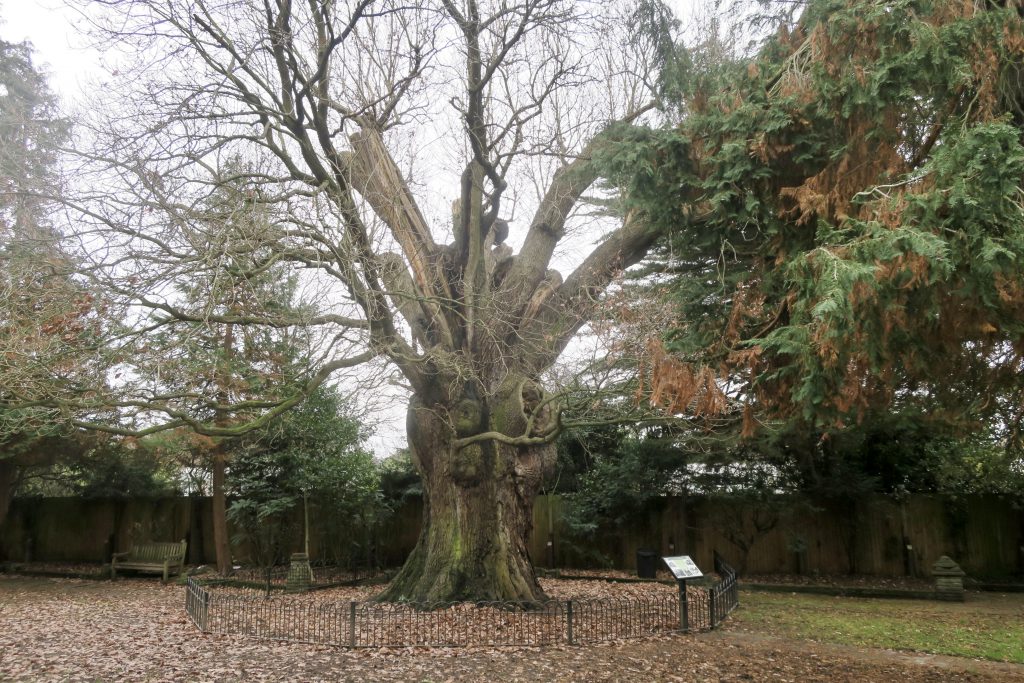
In another book, one that I’d had on my bookshelf for years and must have repeatedly overlooked, I was surprised to find yet more information:
An ancient pollarded sessile oak, which is thought to be a survivor of the ancient Forest of Middlesex, stands in Minchenden Oak Gardens. These were formerly the grounds of Minchenden House, one of the area’s great estates, which was built around 1747 by John Nicholl. The tree was already of a substantial size in his time, and it became known as the Chandos Oak during the occupancy of the Chandos family, who bought the estate from him. In 1773, Dr James Beattie knew the tree by this name, and in 1826 an engraving of it appeared in Jacob George Strutt’s ‘Sylva Britannica’ under the same name.
Britain’s Tree Story: Julian Hight
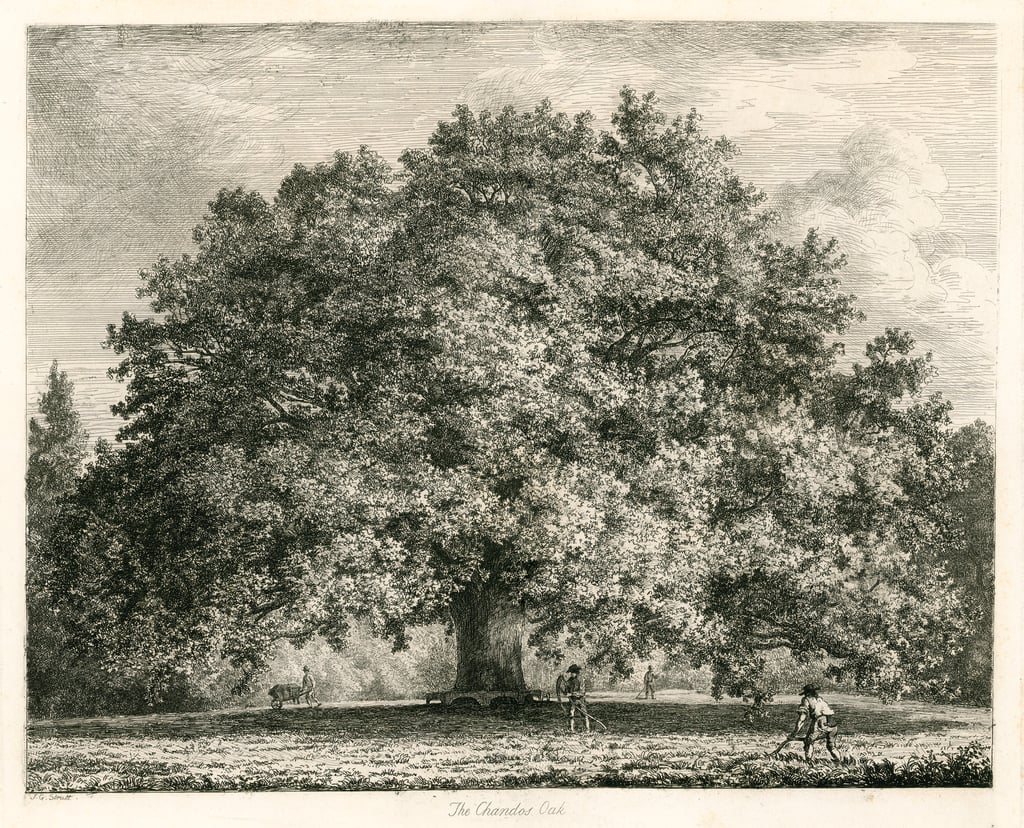
Its girth at one foot from the ground is eighteen feet three inches; at three feet it is fifteen feet nine inches. The height of the stem to the branches is eight feet, and at that distance from the ground it is seventeen feet in girth. It is sixty feet in height, and the extremity of its boughs includes a line of one hundred and eighteen feet. It is in this last particular that its great attraction consists. When it is in full pride of its foliage, it strikes the spectator with sensations similar to those inspired by the magnificent Banyan trees of the east. Its boughs bending to the earth, with almost artificial regularity of form and equidistance from each other, give it the appearance of a gigantic tent; with verdant draperies, drawn up to admit the refreshing breezes that curl the myriads of leaves which form altogether a mass of vegetable beauty and grandeur, scarcely to be equalled by any other production of the same nature in the kingdom. It is a magnificent living canopy, impervious to the day.
Sylva Britannica: Jacob George Strutt
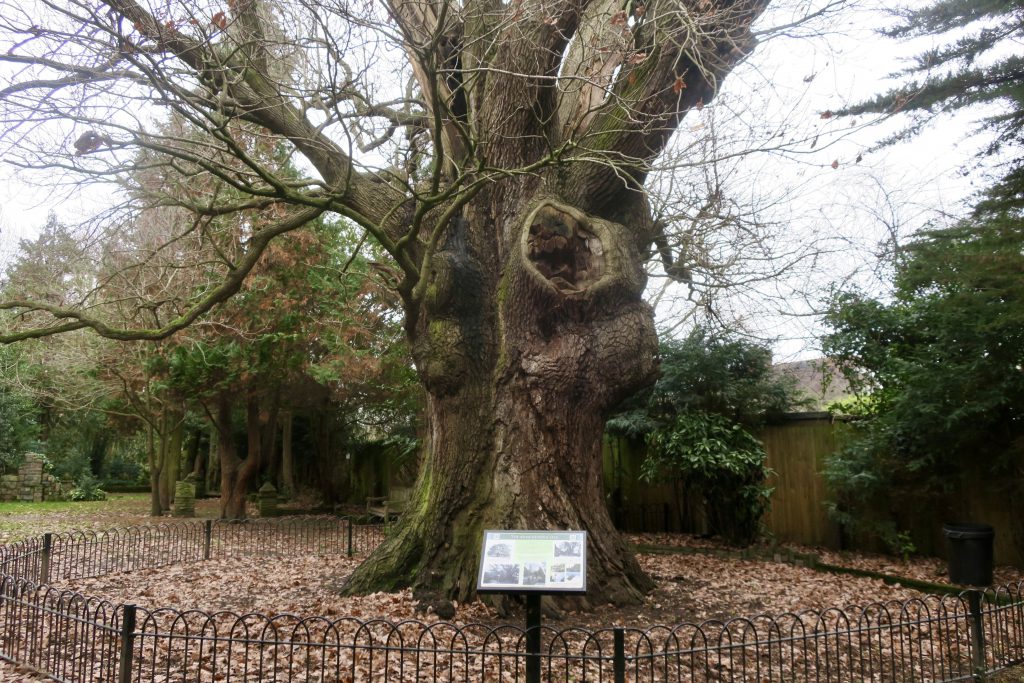
This great relic of a tree is now ringed around by a low fence (to keep me from hugging it) so that it appears to stand in a basket of fallen oak leaves.
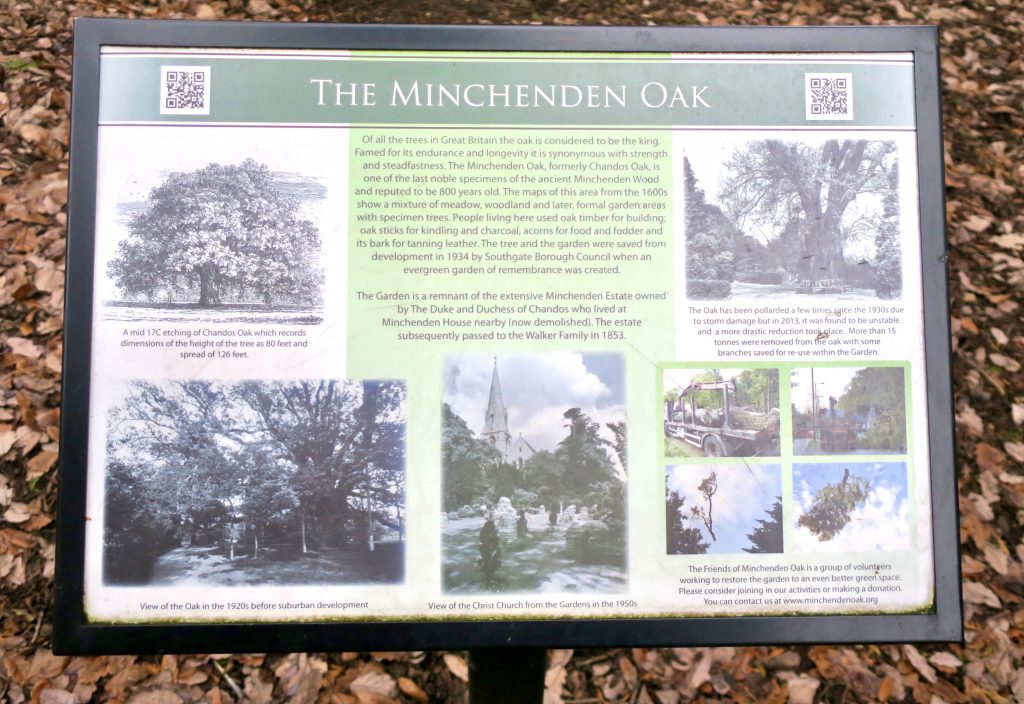
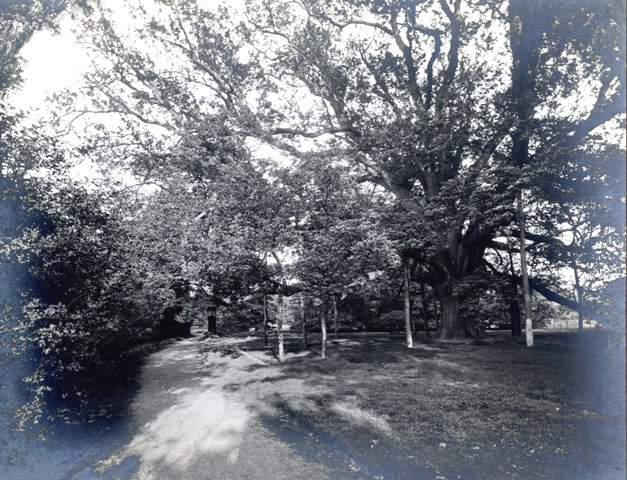
In this photo from the 1920s, before the tree was enclosed in its walled garden, we can see that its great lateral branches still have a wide spread, though they are supported by timber props.
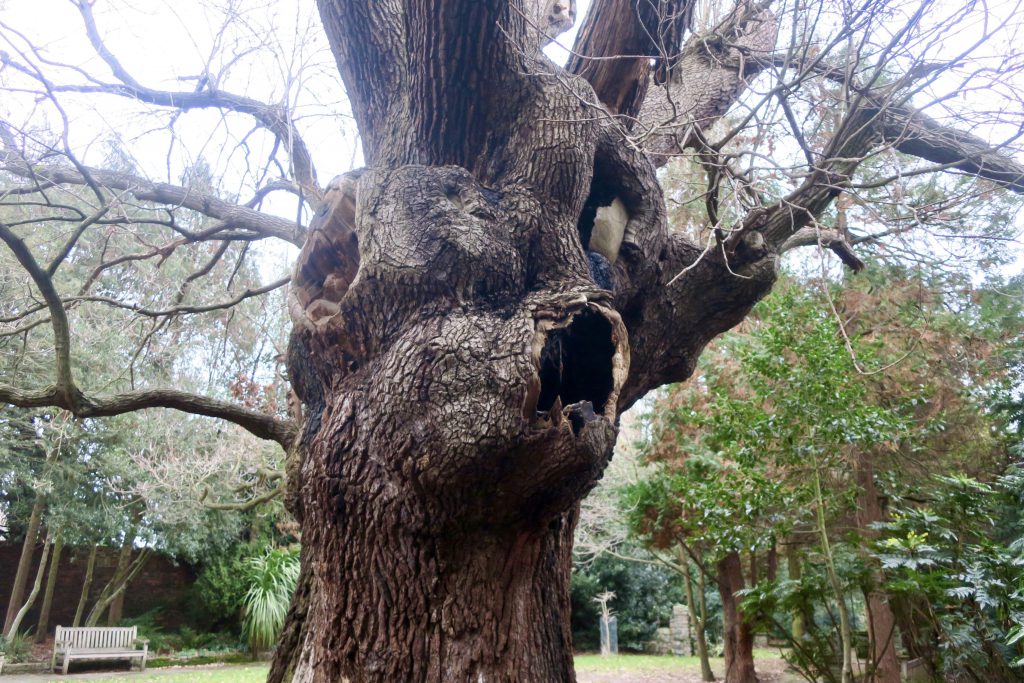
Today those spreading branches are long gone, their scars remain as evidence, but this is now a much reduced tree. I walk around it, beneath its long ago welcoming arms, imagining their green enveloping embrace and the world of wonders they once contained. Even now this ancient is still host to fungi, lichen and moss, to birds and bees and beetles and all the hourglass histories it must have witnessed. Stoic survivor passing the time, sheltering all the world in this suburban garden.
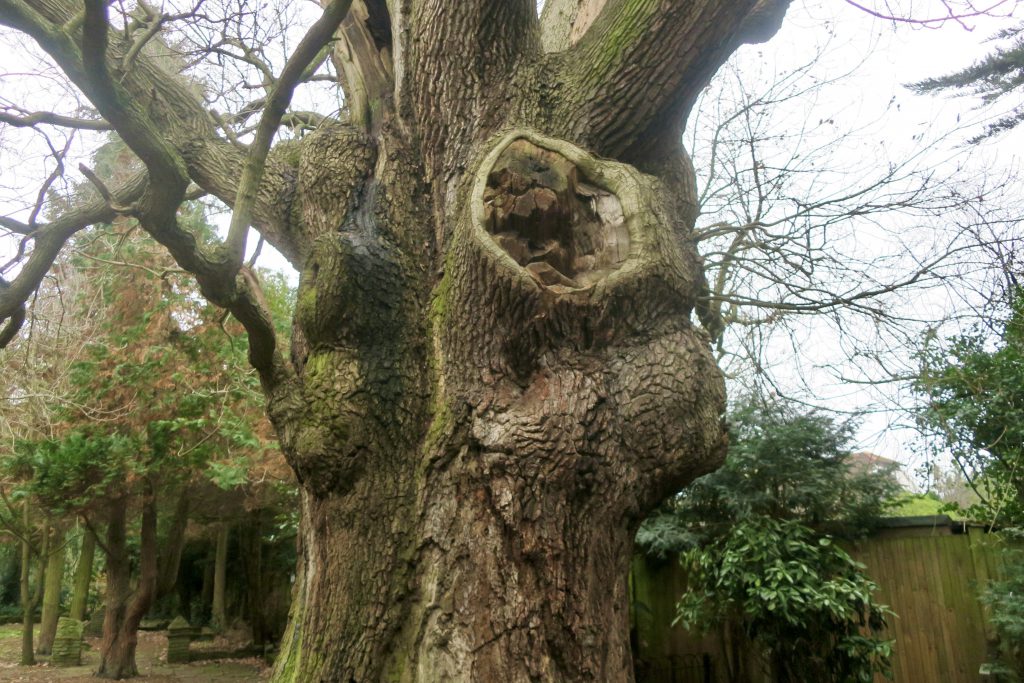
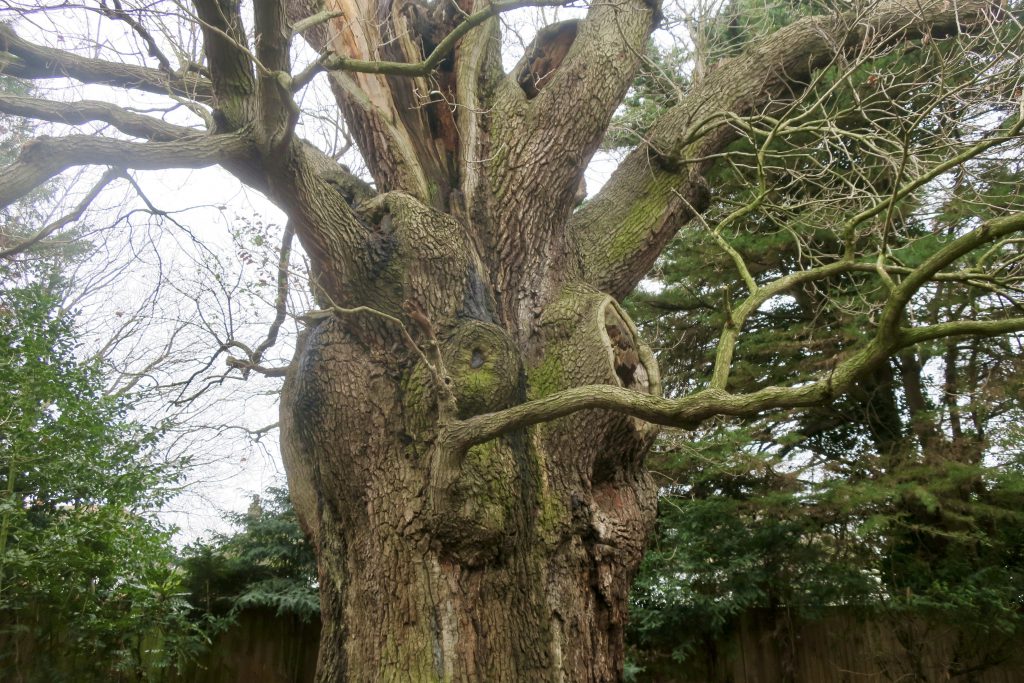
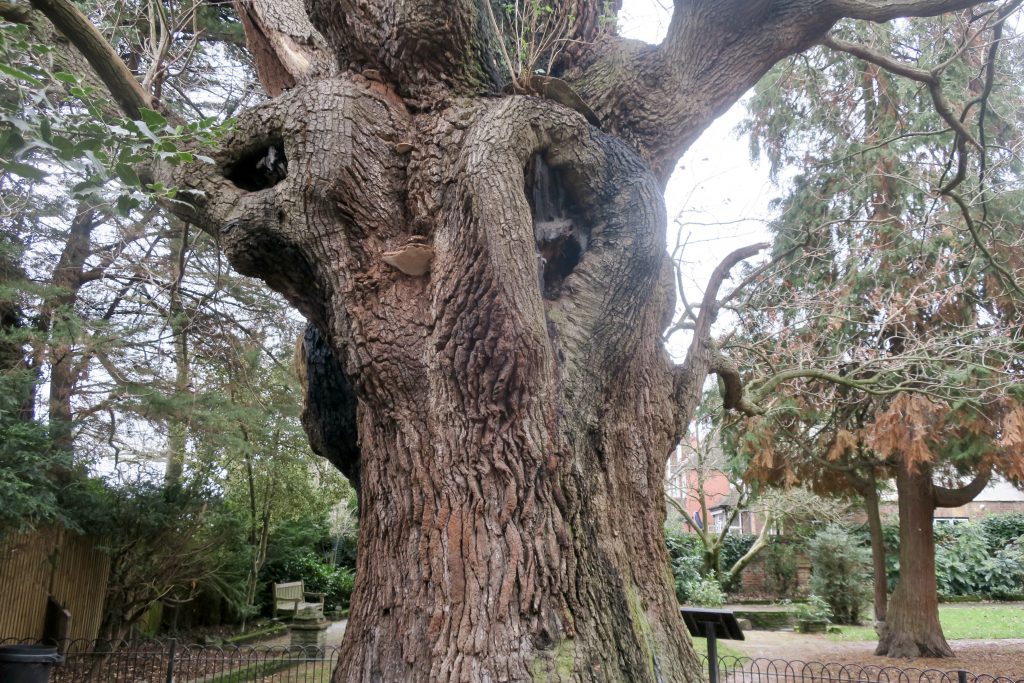
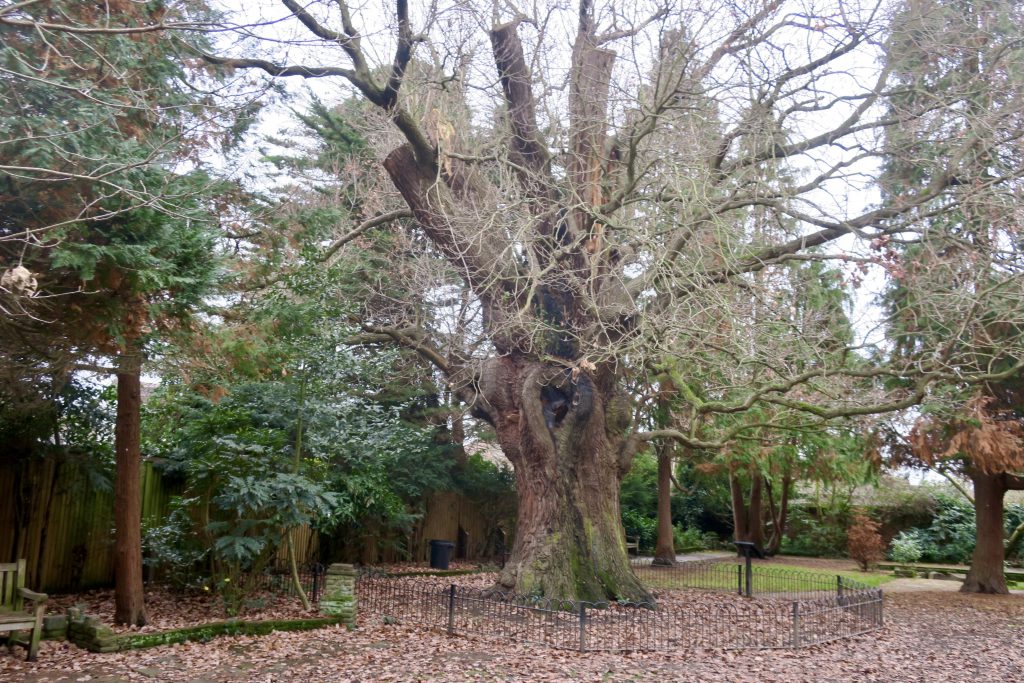
And it’s not just the lateral branches that have gone. Those that reached up to the sky have also been trimmed. In its youth this might have been called pollarding, a way to promote vigorous new growth, but at this stage of life it’s more like remedial action to promote structural stability.
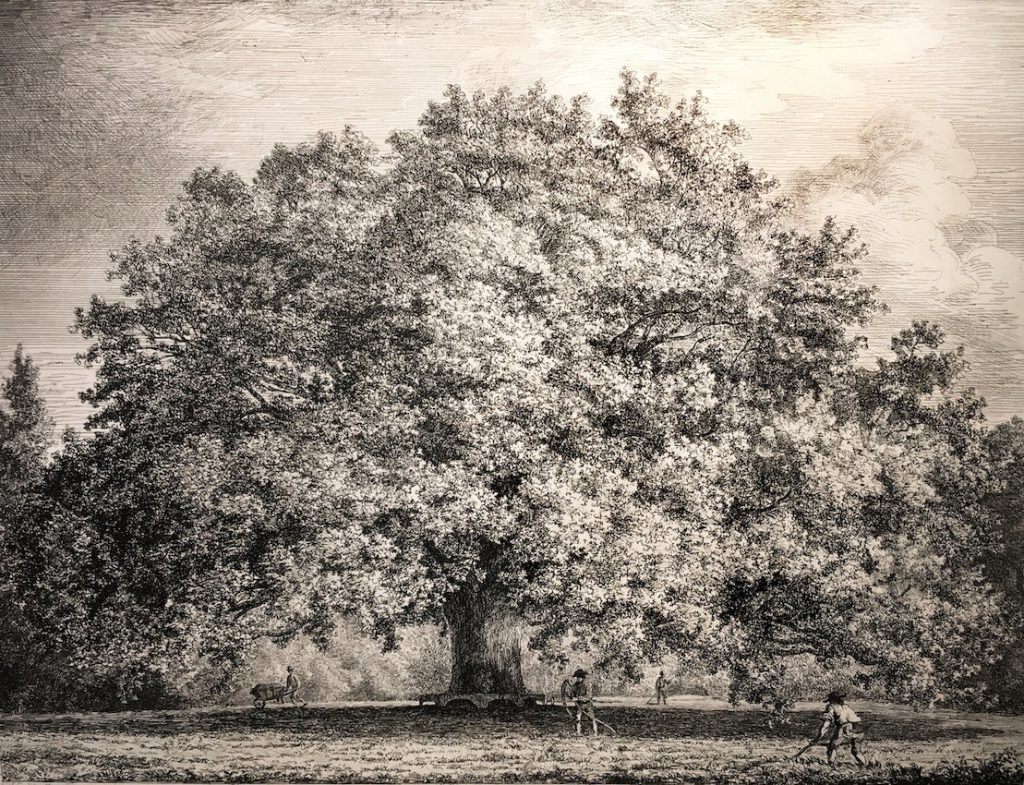
The tree once said to have the largest canopy spread of any tree in England.
※
※
※
Then I read, in Britain’s Tree Story:
In the graveyard of the adjacent Christ Church stands another splendid oak with a girth of 5m (16.4ft), which bears more than a passing resemblance to its distinguished neighbour.
And so I had to go back for another look.
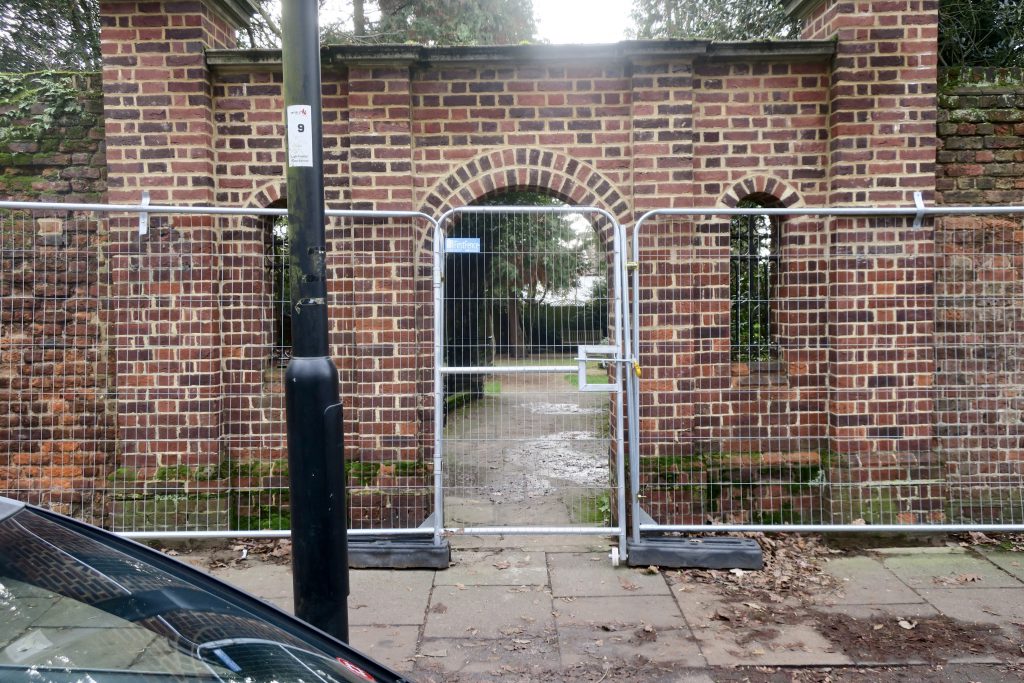
I returned four days later to find the Minchenden Oak Garden closed to the public. Why is this little place so protected? I was so glad I was able to get in when I first visited. And in the churchyard I found another ancient beauty.
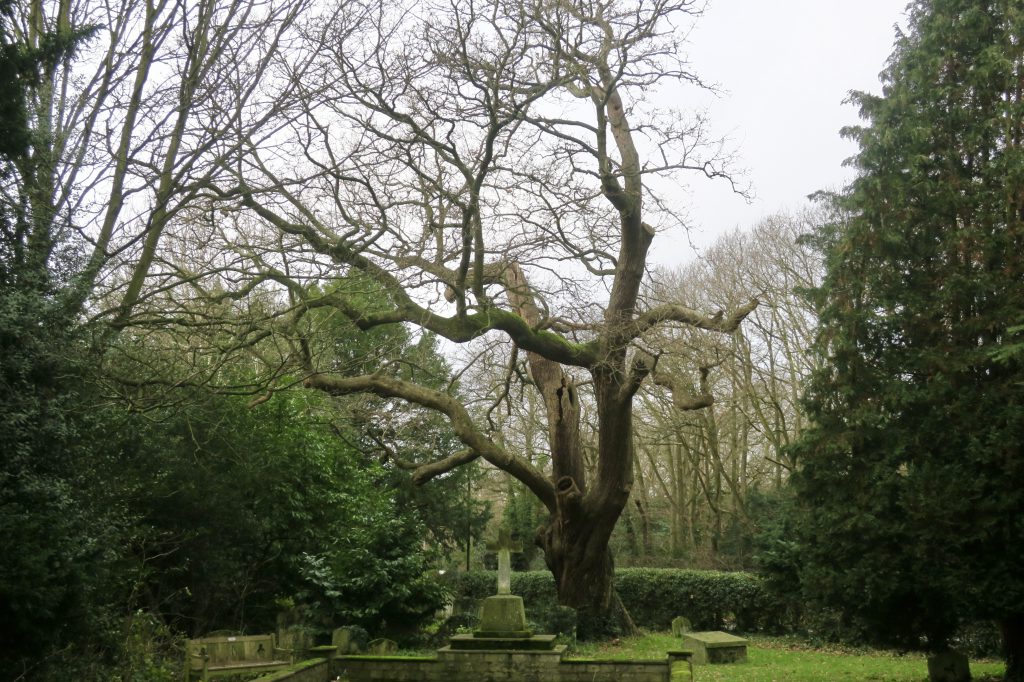
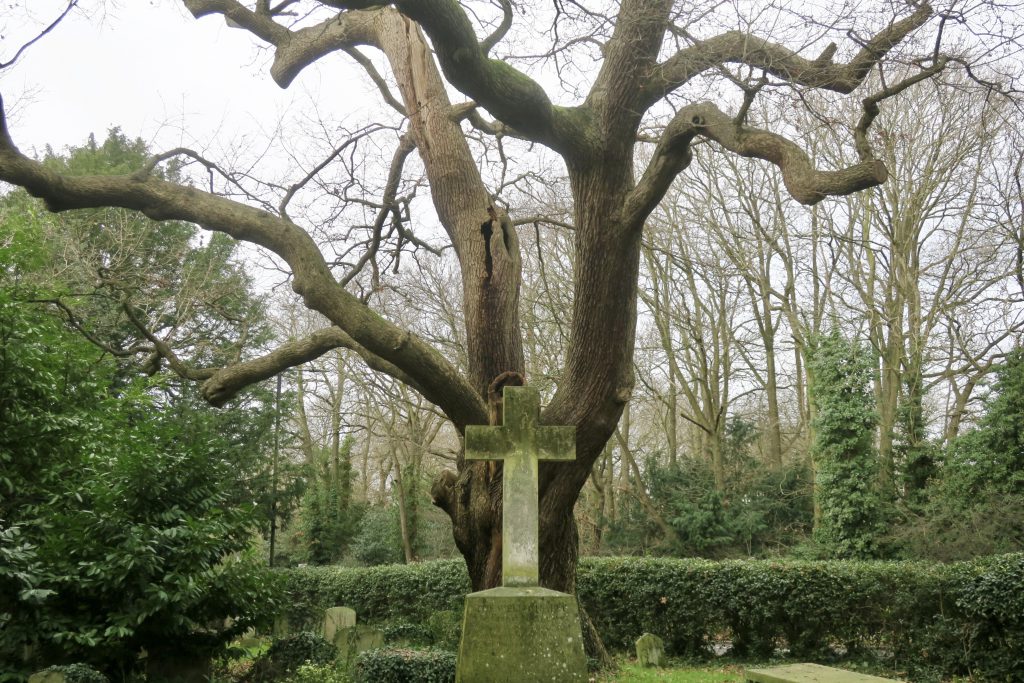
Another survivor of the ancient Forest of Middlesex.
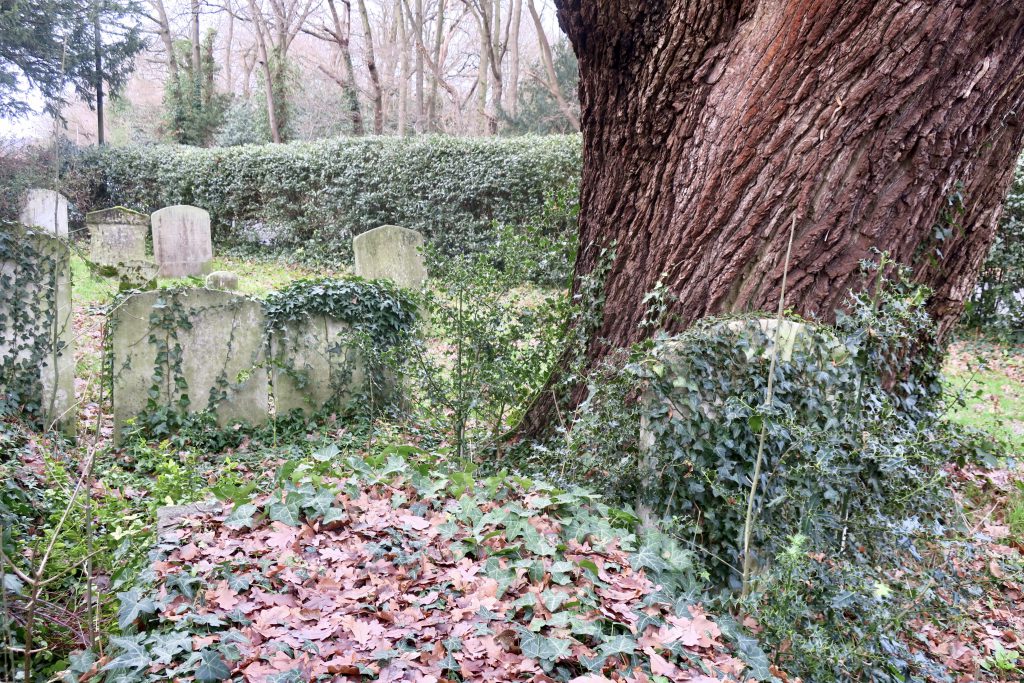
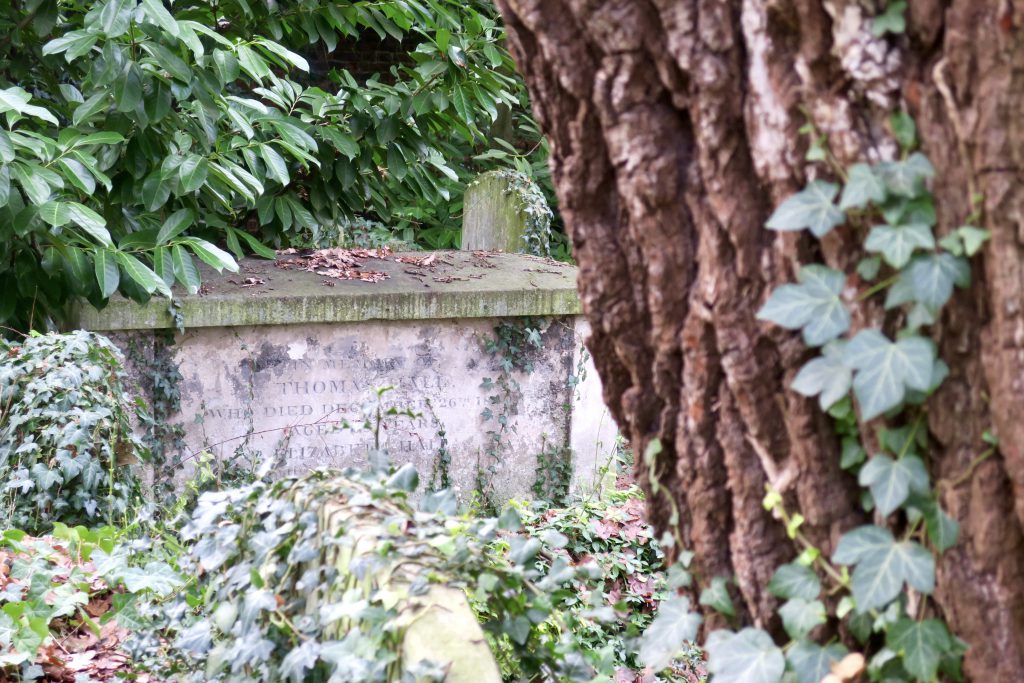
Its proximity to gravestones reminded me of the Thomas Hardy tree at King’s Cross, and sadly of its recent demise…
※
※
※
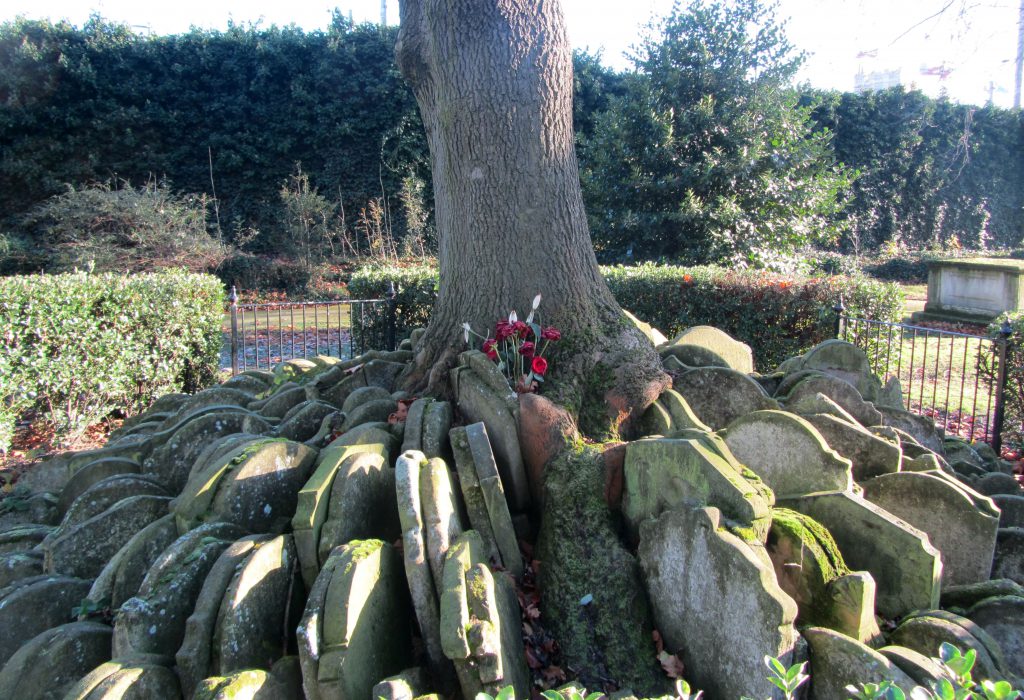
Hardy Ash? – Frames of Reference
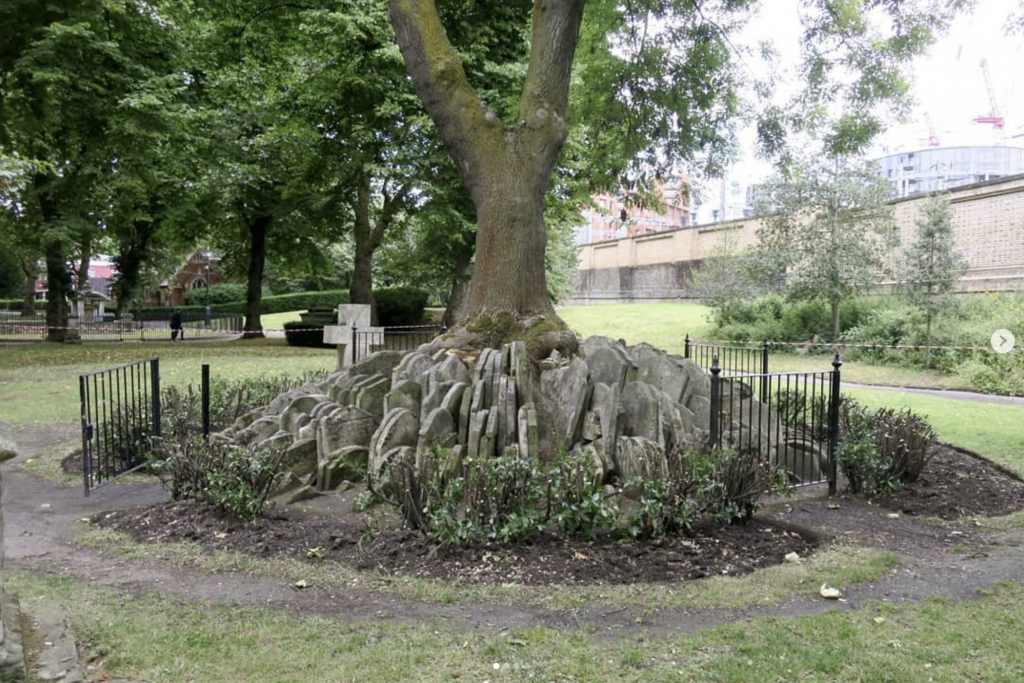

※
Headstones and tree-rings count the passing years
Time’s fleeting river subtracts them and disappears


Chris,
I didn’t realize the Hardy tree was no more. I’m so glad you brought it to our attention those many years ago. And also that I got to take one of my daughters to see it the last time we were in London.
Paula
Yes, sad news, though inevitable I guess. I hope they keep the stone circle, maybe plant another tree inside, though not an ash. Perhaps Thomas Hardy should’ve chosen an oak tree.